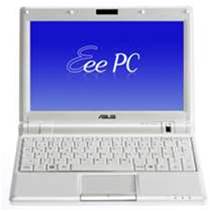
Their trek was assisted by some surprising technology.
Their main source of power throughout the trip was solar power. “Because we had 24 hours of natural sunlight, we took advantage of that and used four solar panels that charged directly into Gelcel batteries,” said Bray.
A Garmin eTrex Vista HCx GPS unit took their location every fifteen minutes and relayed it to a map on their website, http://www.1000hourday.com.
The pair wrote a daily blog entry about the trip, including photos, maximum and minimum temperatures, and GPS co-ordinates.
A solid-state Asus Eee PC 900 laptop provided a platform for writing blog entries and viewing Google Earth. The laptop held up "despite being covered in bits of tundra, sand, specs of chocolate and who knows what else the filth in our tents is comprised of," wrote Bray in the expedition's blog.
Bray used a Canon 1D Mk III digital SLR with a 400mm stabilised lens and 1.4 tele-extender, while video was recorded on a three-chip HD Handycam and saved onto a solid-state memory card.
Carter and Bray tested the laptop and cameras in a -40°C freezer before they left.
“At those temperatures they still worked, but the battery life deteriorates in freezing temperatures.”
Data was uploaded via an Iridium 9505A satellite phone using email compression software xGate. The pair said they had no problems with reception on Victoria Island.
iPods helped them get through some of the difficult terrain, featuring songs like Daft Punk's 'Human Robot'.
“It was a massive effort to collect as much music as we could,” said Carter.
“The main thing that got us through were audiobooks. Harry Potter, in fact. You’d be hauling the pack, tuning out of the terrain, listening to stories of these long tables groaning under the weight of food.”
Their technological access even helped them out of a surprising problem. Halfway through their trip, the captain who was meant to meet them at the end point was arrested. Bray and Carter used their satellite phone to try and arrange other transport, to no avail.
Shortly after arriving at the end, they saw a tugboat in the distance.
“With a few calls from the satellite phone, we were put through to the tugboat’s captain, who agreed to stop and pick us up.”
The pair are planning separate ocean-going adventures over the next year.


_(22).jpg&h=140&w=231&c=1&s=0)
.png&h=140&w=231&c=1&s=0)
_(20).jpg&h=140&w=231&c=1&s=0)






 iTnews Executive Retreat - Security Leaders Edition
iTnews Executive Retreat - Security Leaders Edition











_(1).jpg&h=140&w=231&c=1&s=0)



